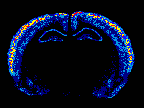Project 2: PCBs and Brain Development
TPolychlorinated biphenyls (PCBs) are a class of industrial compounds consisting of paired phenyl rings with various degrees of chlorination. Before their production was banned in the 1970s, over a billion kilograms of PCBs were produced and they are now ubiquitous, environmental contaminants routinely found in samples of human and animal tissues. PCBs become concentrated in human milk with concentrations for individual congeners reportedly reaching from 1.28 µg/ml (3.52 µM) to 13.2 µg/ml (36.3 µM). PCBs are known to be developmental neurotoxicants, and because their structure is somewhat similar to that of thyroid hormone, there is strong suspicion that PCBs can interfere with thyroid hormone action during development.
The lab is engaged in several projects to test the hypothesis that individual PCB congeners can interfere with thyroid hormone action during development.

Postnatal Development
PCBs are known to reduce circulating levels of thyroid hormone. However, it is not clear what effect this has on thyroid hormone action. Therefore, we examined whether PCB exposure could influence thyroid hormone-responsive gene expression. Surprisingly, we found that PCB exposure increased the expression of thyroid hormone-responsive genes, RC3/Neurogranin and Myelin Basic Protein.

Developmental Events
We have found that PCBs can increase the expression of HES-1 mRNA in the fetal cortex. This may indicate that PCBs can increase the production of glial cells at the expense of the production of neurons.